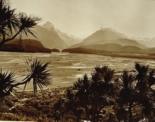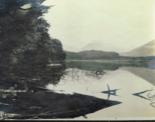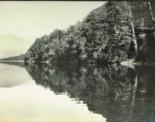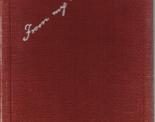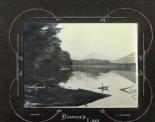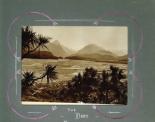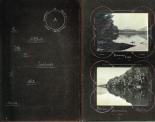THE "RED PARADISE ALBUM" Gallery
THE "RED PARADISE ALBUM"
This month we take you back in time to the summer of 1919 when these photographs were taken by an unknown photographer who had a holiday at Paradise. The “Red Paradise Album” is one of Glenorchy Museum’s treasures as it captures the region as it was in 1919.
Just a year after soldiers returned from World War I, the album ends with a poignant “Lest we forget” and a picture of Otago Boys High School, which gives us just one small clue as to who might have been the owner of the album. You can see the photos here or go onto http://ehive.com and search Paradise and you’ll find heaps of great Paradise images from our collection.
Paradise, in 1919, was being run as a guest house by the Aitken Family. The house had been designed and built by William Mason, who had once been Mayor of Dunedin and was a well-known New Zealand architect. In 1877, he had been hired by John Butement to design a house but nothing came of it. Still, coming up the lake, he must have been smitten, as in 1883 he acquired some land off of Joseph Cyprian Fenn who was a nephew of Kate Mason’s first husband (and famously built Arcadia, too), and built a small house, calling it Eden Grove. Kate became Glenorchy Library’s first main patron, donating many of the books that are in the old library.
In 1885, David and Jenny Aitken and their family came to help the Mason’s with the farming and by 1890 they had taken on the role of looking after and running a 15 room guest house that was built at Paradise. Later the annex was built and there was enough accommodation for 28 guests. By 1893 the Masons had moved back to Queenstown and the Aitken family owned and ran Paradise until 1943 when the Veints took it on for a few years before selling it to the Miller Family in 1949.
According to Barbara Heffernan’s memoir, Paradise Remembered written in 1991, “the period between the wars was a good time in which to be young in New Zealand, far from the troubles of the outer world.” Barbara spent 8 years at Paradise not long after these photos were taken. She describes some of the entertainment of visitors at Paradise when they weren’t out walking and exploring:
During the main holiday period, on a suitable evening, the tables and chairs would be pushed back in the Dining room, musicians rounded up – there was a piano in the room – for dancing. More people played in those days with varying degrees of ability and a programme of old time dances kept everybody happy, both participating and watching. Dancing was dancing then, not jigging about, with sequence dances that had to be learned. Much fun was had initiating the never-done-it-befores into the mysteries of the Lancers, Maxina, Destiny, Polkas and Waltzes. The ‘modern’ were catered for too, with Foxtrots and Onesteps.
You’ll notice that many of the views in these photos don’t look too different from today. Maybe there’s some comfort in knowing that though nearly 100 years has passed, the mountains and rivers look very much the same. Today the Paradise Trust keeps the spirit of Paradise alive and very well. Who knows, maybe we’ll have to bring back some of the old dances to the Old Schoolhouse, now that it’s a part of Paradise, too!
On behalf of the Museum and Heritage Group, we hope you’ve enjoyed all of this year’s historic photos. Thanks for all of your support this year and please keep giving us feedback on what you like and what kinds of stories you’d like to hear more.


